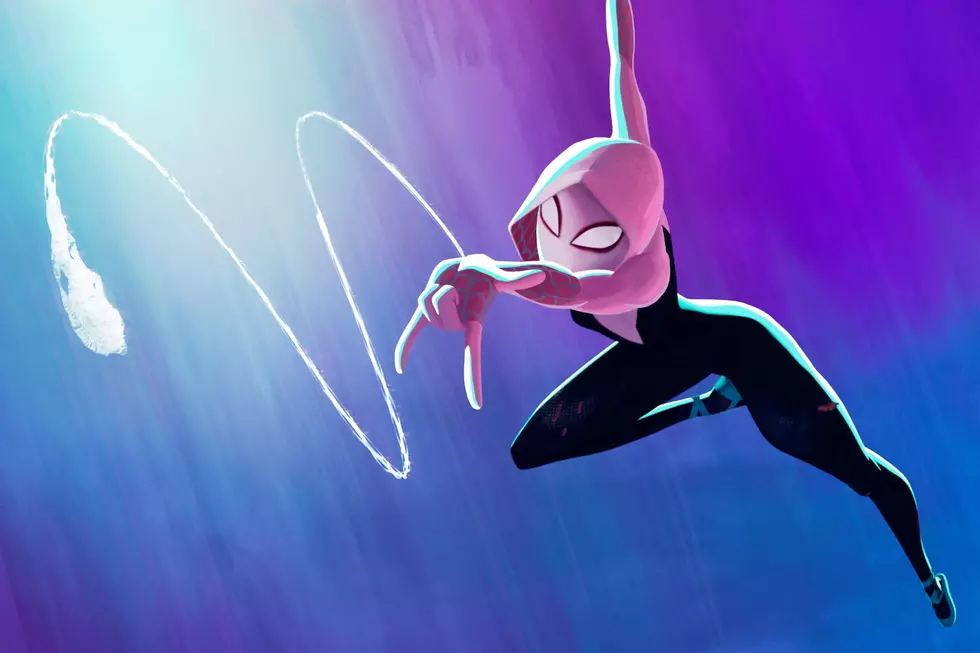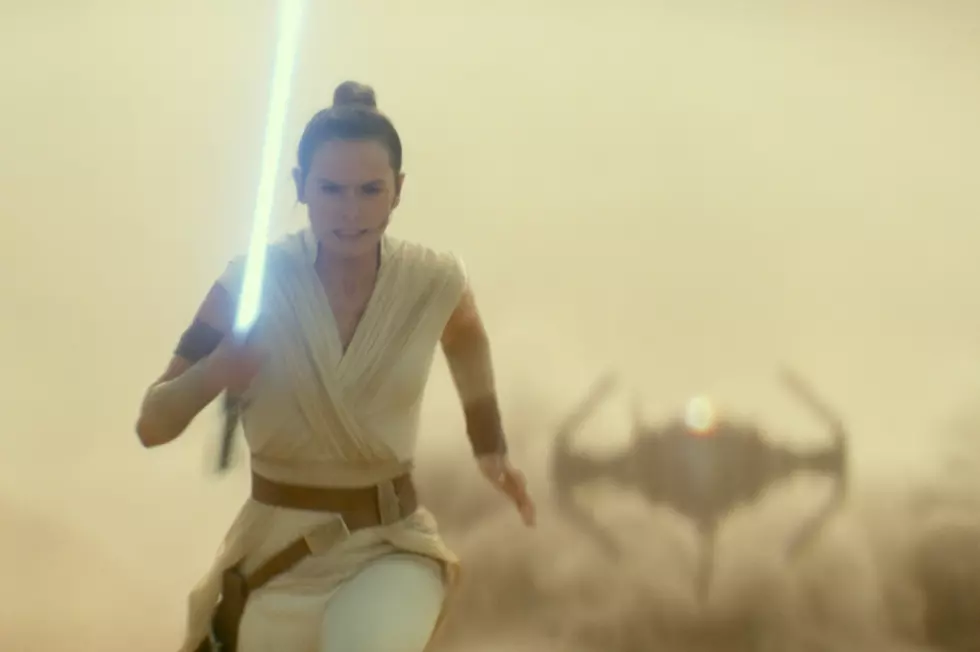
‘Spider-Man: Across the Spider-Verse’ Review: A Sequel With Great Power
There are generally two types of sequels: The ones that rehash the previous film’s success for financial gain, and the ones that use the previous film’s success as a license to experiment. Spider-Man: Across the Spider-Verse isn’t just that second kind of sequel, it’s actually about making precisely that sort of movie. Its real villain isn’t the Vulture or the Spot, it’s storytelling orthodoxy; the idea that you must create a work of art in a certain way simply because that’s how it’s always been done.
To say how or why might take us across the spoiler-verse, so I’ll reserve my specific thoughts about that subject for a later article. For now, it’s worth saying in a non-spoiler-y way, that Across the Spider-Verse is not just a repeat of the previous Into the Spider-Verse. While it does contain most of the same central characters and a plot that involves the Spider-Men and -Women (and -Kitties) of assorted universes, this is not a feel-good reunion story about our beloved heroes working to stop an apocalyptic threat as they learn that they aren’t quite as alone in the universe (technically the multiverse) as they thought. In fact, it’s closer to the opposite.
READ MORE: We Tried the Red Across the Spider-Verse Whopper
About a year and a half after the events of the first Spider-Verse, Miles Morales (Shameik Moore) remains his Earth’s friendly neighborhood Spider-Man. He’s older and a little less scrawny, but he’s still got a lot of the same problems. Web-slinging takes up a ton of time, so Miles is perpetually late to classes, guidance counselor meetings, and parties with his loving but frustrated parents, Jefferson (Brian Tyree Henry) and Rio (Luna Lauren Velez). And even though Miles bonded with a bunch of Spider-Men from alternate dimensions in the previous film (including Hailee Steinfeld’s Spider-Gwen and Jake Johnson’s middle-aged dad-bodded Spidey, Peter B. Parker), he still feels isolated and alone. None of the other Spider-Verse heroes have shown up on Miles’ Earth since Into the Spider-Verse.
The reasons why gradually become clear over the course of the film, after Gwen finally pays Miles a visit — partly to check on a new super-villain named the Spot (Jason Schwartzman) who possess the power to create interdimensional portals and is perilously close to unlocking the ability to travel through the multiverse. Gwen arrives on Miles’ Earth as the newest member of the “Spider Society,” a massive collection of spider-powered beings under the supervision of Miguel O’Hara, the Spider-Man of the year 2099 (Oscar Isaac).
Spidey 2099 hails from a high-tech, humorless future with the ability to comprehend the “correct” way events on each Earth are meant to play out. Miguel and his team protect the multiverse from the danger posed by “anomalies“ like the Spot — and maybe even Miles himself. The Spider Society has recruited hundreds of Spider-Men to their cause, but Miguel doesn’t trust Miles and intentionally kept him out of the group until now.
Some of what happens from there I’m intentionally leaving vague so you can discover it for yourself in the theater. (Across the Spider-Verse’s final 30 minutes features some terrific plot twists.) Some of what happens from there I’m leaving vague because it still hasn’t happened yet. Across the Spider-Verse is the first part of a two-part continuation of Into the Spider-Verse; the capper to the trilogy, Spider-Man: Beyond the Spider-Verse, is scheduled to open in theaters next March.
As such, a lot of Across the Spider-Verse’s 140-minute runtime is a series of long setups; a prologue set entirely in Gwen’s universe, followed by a lengthy section reintroducing Miles and his family. By the time Spider-Man 2099 shows up in earnest to fully reveal what this Spider-Verse is all about, it’s already almost over — a choice I could see disappointing some audiences.
Certainly the pace of Across the Spider-Verse is slower than its predecessor. The story’s a bit shaggier as well. But the larger canvas also gives directors Joaquim Dos Santos, Kemp Powers, and Justin K. Thompson more room to explore the tortured psyches of Miles, Gwen, and Miguel, and to expand Into the Spider-Verse’s already eye-popping animation in even more audacious directions.
The first Spider-Verse featured Spider-Men from six dimensions, but it was set almost entirely on Miles’ world, with its bleeding colors and Ben-Day dot details. Across the Spider-Verse takes its title literally, and is primarily set in four different universes, each rendered in its own unique visual style — like Gwen’s Earth, which looks like a watercolor painting come to life (along with the gorgeous Robbi Rodriguez covers from the Radioactive Spider-Gwen series). Its key action sequence occurs inside New York’s Guggenheim Museum, where the visitors, and even a few of the heroes, debate the artistic merits of Jeff Koons’ giant balloon animals (which, according to the closing credits, appear in Spider-Verse with Koons’ permission).
That debate about the nature of Koons’ work echoes some of the conversations between Spider-Man 2099 and his Spider-Society that I alluded to earlier. Miguel and his team don’t talk about protecting the multiverse; they refer to it as guarding “the canon.” That deliberate choice of words instantly reshapes the themes and meaning of the entire Spider-Verse franchise.
Into the Spider-Verse was really about the universality of Spider-Man’s values; how you didn’t have to be a dorky kid from Queens named Peter Parker to be Spider-Man. Anyone who believed that great power comes with great responsibility, and wanted to use whatever innate gifts they possessed to help others, could be a hero. Across the Spider-Verse still features plenty more non-Peter Parker-y Spider-Men; it’s even got a Spider-Horse or two. But it’s also much more about what it means to create something that rejects the notion that Peter Parker needs to be the central focus of every Spider-Man story, even in the face of intense opposition. It’s also about notion that every sequel needs to spoon-feed the audience more of the same stuff they liked the first time around.
Additional Thoughts:
-Spare a thought for the writers and YouTubers who have to catalog the Marvel Easter eggs in this movie. There are so many. They’ll never find them all.
-There are a lot of cool Spider-Men in this movie, but the standout addition to the cast has to be Spider-Man India, voiced by Karan Soni, who swoops in and brightens the entire film with his enthusiasm, charm, and luxurious hair.
-At first viewing, I would say Into the Spider-Verse is a better film overall than Across. But I liked Into the Spider-Verse even more on repeat viewings. Plus this story isn’t over yet; there’s still Beyond the Spider-Verse next year. At this point, Miles’ journey is very much to be continued...
RATING: 8/10

Every Spider-Man Movie, Ranked From Worst to Best
More From 94.3 WCYY










